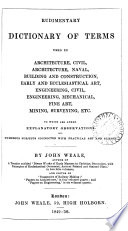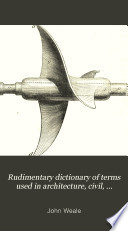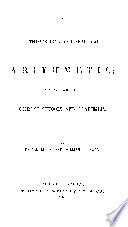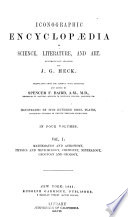 | 1850 - 772 pages
...and La Grange. The mechanical powers may be reduced to three, but they are usually expressed as six, the lever, the wheel and axle, the pulley, the inclined plane, the screw, ana the wedge. In a single moveable pulley the power gained is doubled. In a continued combination... | |
 | Daniel Adams - Measurement - 1850 - 144 pages
...to facilitate the moving of weights or the overcoming of resistance. They are six in number; viz., the Lever, the Wheel and Axle, the Pulley, the Inclined Plane, the Wedge, and the Screw. In mechanical powers and in machinery, the thing to be moved, or the resistance... | |
 | John Weale - 1850 - 590 pages
...are supposed to be perfectly rigid. The mechanical powers, sometimes described as six in number, viz. the lever, the wheel and axle, the pulley, the inclined plane, the wedge, and the screw, are reducible to two only, viz. the lever and the inclined plane, in each of... | |
 | Thomas Dick - Cosmology - 1850 - 684 pages
...of a few bars of thin iron ?" And when we consider that all the mechanical powers may be reduced to the lever, the wheel and axle, the pulley, the inclined plane, the wedge and the screw, how astonishing are the forces exerted, and the effects produced, by their various... | |
 | John Weale - Architecture - 1850 - 600 pages
...supposed to - be perfectly rigid. The mechanical powers, sometimes described as six in number, viz. the lever, the wheel and axle, the pulley, the inclined plane, the wedge, and the screw, are reducible to two only, viz. the lever and the inclined plane, in each of... | |
 | Daniel Leach - Arithmetic - 1851 - 280 pages
...breadth at the beam ? MECHANICAL POWERS. SECTION XLVI. 394. THERE are six mechanical powers, viz., the lever, the wheel and axle, the pulley, the inclined plane, the screw, and the wedge. 395. The lever is a bar, supposed to be inflexible, movable upon a fulcrum. 396. To find what weight... | |
 | Denison Olmsted - Physics - 1851 - 492 pages
...friction? What ftre the methods of diminishing friction ? Specify the comparative amount of friction in the lever, the wheel and axle, the pulley, the inclined plane. the friction evidently exceeds the resistance ; otherwise they would not retain their position. 171. Friction... | |
 | E W. P - 1851 - 262 pages
...mechanical powers now, mamma ?" " Yes, I believe you may refer all sorts of mechanical contrivances to the lever, the wheel and axle, the pulley, the inclined plane, the wedge, and the screw, either separately or combined." "I will notice, mamma, and then whether I am... | |
 | 1851 - 716 pages
...simple arrangements of which all machinery is compounded. Of these, six are generally distinguished: the lever, the wheel and axle, the pulley, the inclined plane, the wedge, and the screw. All these, however, may strictly be reduced to two — the lever and the inclined... | |
 | rev. David Williams (M.A.) - 1851 - 168 pages
...branch denominated Statics will be the subject of the present inquiry. The mechanical powers are six: the lever, the wheel and axle, the pulley, the inclined plane, the wedge, and the screw. The lever is the most powerful, because there is no limit to the difference of... | |
| |